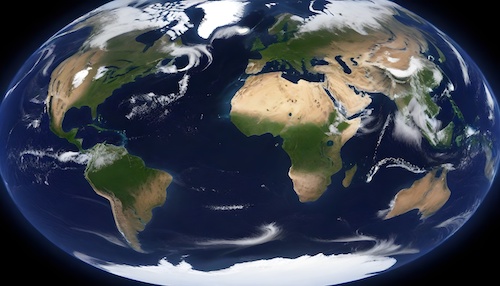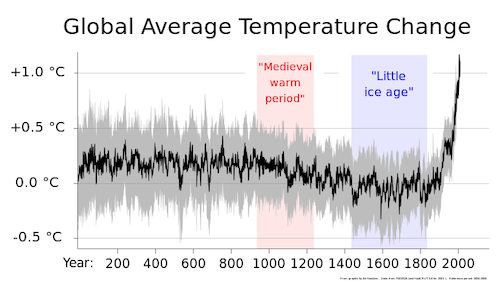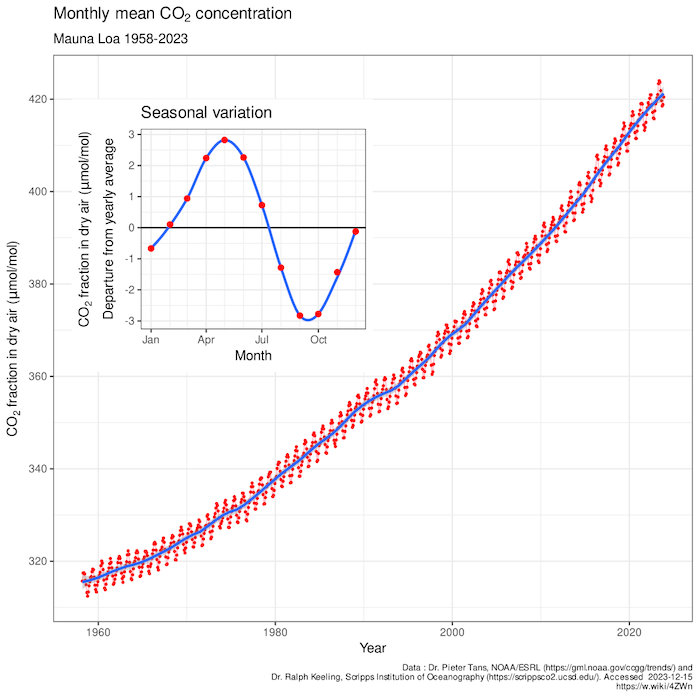Is Earth’s Climate Changing?

Have you ever wondered if our planet’s climate is really changing? The answer is yes, and it’s important for everyone to understand what’s happening and why. By understanding the science behind climate change and making informed choices, we can work towards a more sustainable world.
The Global Temperature Records:
Scientists from all around the world had been diligently recording temperatures for over a century. They collected data from land and sea, from the North Pole to the South Pole. When they put all the pieces together, they discovered a surprising trend: Earth’s average surface temperature had been rising steadily since the late 1800s. Each decade was warmer than the last, with the most recent years breaking all previous records.
As the scientists studied the temperature data, they realized that this warming trend wasn’t just happening in one place – it was a global phenomenon. From the United States to Australia, from Europe to Asia, the Earth was getting warmer. They knew that something big was happening, but they needed more information to understand what was causing this change.

What is the Keeling Curve?
In 1958, a young scientist named Charles Keeling embarked on a journey that would change the course of climate science forever. Keeling was fascinated by the Earth’s atmosphere and wanted to know more about the gases that made it up. He set up a small laboratory on the slopes of the Mauna Loa volcano in Hawaii and began measuring the levels of carbon dioxide (CO2) in the air.
Day after day, Keeling carefully collected samples and analyzed them. To his surprise, he discovered that the concentration of CO2 in the atmosphere was increasing year after year. He realized that this increase was not natural – it was caused by human activities, such as burning fossil fuels like coal and oil.

Keeling’s discovery was groundbreaking. He had uncovered a critical piece of the climate change puzzle. The more CO2 humans released into the atmosphere, the more heat was trapped near the Earth’s surface, causing the planet to warm up. Keeling’s measurements, known as the “Keeling Curve,” became one of the most important and iconic datasets in climate science.
Here is an informational text that delves into Earth’s changing climate. It includes comprehension questions in multiple choice format. It explores the main idea of climate change, focusing on rising temperatures documented since the late 19th century. Key supporting details include the analysis of temperature data from weather stations and the attribution of global warming to human activities like fossil fuel consumption. It underscores the severe consequences of rising temperatures, such as melting ice caps and disruptions to ecosystems. Through its structured format, the text facilitates comprehension by presenting main ideas and supporting details for assessment.
Informational Text with Quiz:
Is Earth’s Climate Changing?
For decades, scientists have been studying Earth’s climate to understand patterns and changes over time. One key aspect of this research is the analysis of global temperature records. These records provide valuable insights into long-term climate trends and variations.
The global temperature record is compiled from data collected by thousands of weather stations around the world. These stations measure temperature at various locations and times, providing a comprehensive view of Earth’s climate. By analyzing this data, scientists can track changes in temperature patterns over months, years, and even centuries.
One striking finding from the global temperature record is the trend of rising temperatures in recent decades. Since the late 19th century, Earth’s average surface temperature has been steadily increasing. This phenomenon, known as global warming, is primarily attributed to human activities such as the burning of fossil fuels and deforestation, which release greenhouse gases into the atmosphere.
The consequences of rising temperatures are profound and far-reaching. They include melting ice caps, rising sea levels, more frequent and severe weather events, and shifts in ecosystems and biodiversity. These impacts underscore the urgent need for mitigation efforts to address climate change and its associated risks.
Multiple-Choice Questions:
- What is the main idea of the text?
A) The importance of global temperature records
B) The causes of global warming
C) The consequences of rising temperatures
D) The urgent need for climate change mitigation - Which of the following details supports the main idea?
A) The melting of ice caps and rising sea levels
B) The trend of rising temperatures since the late 19th century
C) The analysis of temperature data from weather stations
D) The impact of human activities on climate change - Which detail from the text also supports the main idea?
A) The historical context of global temperature trends
B) The role of greenhouse gases in trapping heat in the atmosphere
C) The effects of climate change on ecosystems and biodiversity
D) The measurement of temperature variations over months and years - What is the best summary of the text?
A) Scientists study global temperature records to understand climate change, which is mainly caused by human activities and leads to severe consequences such as melting ice caps and more frequent extreme weather events.
B) The global temperature record shows a steady rise in Earth’s average surface temperature, primarily due to the burning of fossil fuels and deforestation, resulting in significant impacts on ecosystems and biodiversity.
C) Climate change, driven by human activities, is evidenced by the rising global temperature record, which has consequences like melting ice caps and rising sea levels, highlighting the need for urgent mitigation efforts.
D) Rising temperatures, as indicated by global temperature records, are a result of human activities such as the release of greenhouse gases, leading to various impacts such as melting ice caps and shifts in ecosystems, emphasizing the importance of addressing climate change.
Answers
1.(A) The importance of global temperature records
2.(C) The analysis of temperature data from weather stations
3.(D) The measurement of temperature variations over months and years
4. (A) Scientists study global temperature records to understand climate change, which is mainly caused by human activities and leads to severe consequences such as melting ice caps and more frequent extreme weather events.




One Comment